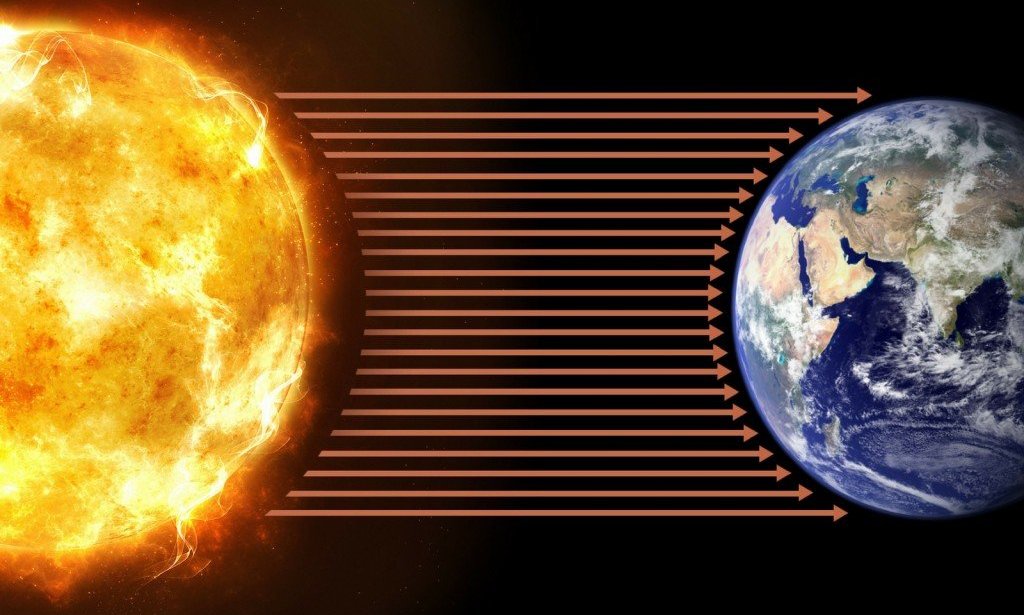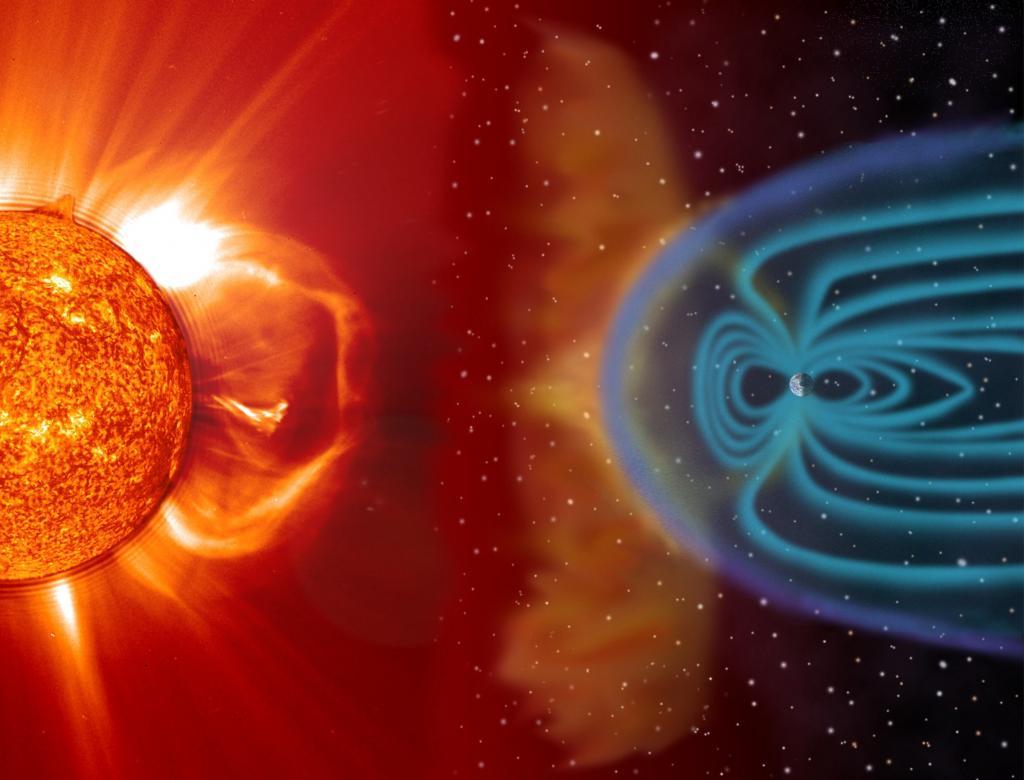What is total radiation? In what cases can we talk about this phenomenon? What is its feature and difference from ordinary radiation? What determines the magnitude of this concept? These, as well as a number of other issues, will be considered in the framework of this article.
Introductory information
Solar total radiation is one of the wonders of nature. How does it arise? The sun is a source of corpuscular and electromagnetic radiation. The first can not penetrate the atmosphere lower than 90 kilometers. But the electromagnetic completely reaches the earth's surface. Here in meteorology they call it "solar radiation". This is just one two billionth fraction of the Sun’s energy, which travels from star to Earth in just 8.3 minutes. But, despite this, it is the source of energy for almost all processes that take place in the atmosphere and on the surface. It is mainly shortwave. Formed from approximately invisible ultraviolet (~ 9%) and infrared (~ 44%), as well as light (~ 47%) radiation we notice. That is, the sun is a source of heat. And just as importantly, it also supplies light. All this is a prerequisite for maintaining life on our planet.
About values
What comes directly from the star is called "direct solar radiation." Given that the distance between it and the Earth is huge, and the planet is small, then the fall occurs in the form of a beam of parallel rays. As a unit of measure of intensity, the amount of energy that one square centimeter of the surface per minute receives in a perpendicular direction is used. This value is 1.98 calories or 8.3 Joules at the upper limit of the atmosphere. It is accepted as an international standard, and is called the "solar constant." There are slight periodic fluctuations throughout the year. This is due to a change in the distance from the Earth to the Sun. The magnitude of the total radiation can sometimes change in an unexpected way, for example, through sudden changes in the emissivity of the Sun.
The problem of theoretical quantities
What is above is calculated theoretically. The angle of inclination to the horizontal surface of the sun's rays is used as the basis. In general terms, on earth is the same as in the atmosphere. But real indicators are still significantly different due to various factors. The main thing among all the diversity is attenuation due to absorption, scattering and reflection. That which reaches the surface despite all the opposing factors is the energy received by the earth. As a result, direct + scattered together is the total solar radiation. It should be noted that, depending on a number of factors, the value of the energy received can vary even on Earth. Let's see how this is possible.
Taiga example

Why such a choice? The fact is that taiga is both a very indicative and very vast area. In addition, it will not be superfluous to compare its indicators with the previously given data in order to compare and understand the diversity of the world. So, the total radiation of the taiga on its southern borders cannot boast of impressive indicators. For example, even in the presence of a prolonged aurora lasting 1,500-1700 hours, one has to count, at best, at 35-41% of the possible maximum. Although even this is enough for the average annual temperature to increase to about -9 ... -3 ° C. The total radiation of the taiga now allows, when observing the situation, to conclude that gradually the amount of energy received increases. Although the conditions for wintering are still harsh, there are prerequisites that the local land receives enough heat that will allow forests to grow. But the total radiation is not only heat. Speaking about it, one should remember about precipitation. So, in the same taiga their growth is recorded. But characteristic in this case is an increase in snow cover. After all, the temperature is still not high enough. But why such a significant bias? This is largely due to the fact that the attenuation can reach multiple values. In addition, the distribution of the total radiation at the poles and the equator is ambiguous due to the action of geophysical factors.
What do we have as a result?
The sun's rays fall, for the most part, on the atmosphere and the earth's surface not perpendicular (that is, not at an angle of 90 °). The actual flow of energy is called insolation. She enters in two waves. First, direct rays fall on the ground. Some of them are absorbed by the atmosphere, scattered and reflected into space. But the rest goes to living organisms that receive heat and light. Then comes the previously scattered energy - the second wave.
About physical processes

Radiation in the atmosphere undergoes not only quantitative, but also qualitative changes. After all, aerosols and air gases scatter the sun's rays selectively. Total radiation - this is what could pass all the barriers. Absorb radiation water vapor, clouds, ozone. The latter, by the way, greatly reduces the amount of ultraviolet radiation. Gases and aerosols participate in dispersal. The essence of this physical process is the deviation of light rays in different directions from their original direction. Therefore, the scattered radiation comes to the earth's surface not from the side of the solar disk, but from the area of the heavenly vault. The intensity of this process depends on the wavelength. According to Rayleigh's law, the shorter it is, the more active it will be. By the way, this explains the fact that ultraviolet rays are most intensely scattered. Thanks to this, the sky has a blue color in clear weather. By the way, direct radiation seems yellowish. This explains the color of the sun during noon. During the sunrise / sunset of the star illuminating us, the beam path is longer and the scattering is greater. Therefore, only red rays can reach the earth's surface. It is thanks to the dispersion of radiation that there is light in the shade, with cloudy weather, twilight and white nights. One interesting effect is associated with this, however, not on Earth, but on the Moon. Since there is no atmosphere, objects that fall into the shade become literally invisible.
Separate Features
It is necessary to clearly remember the moment that implicitly slipped between the lines: the ratio between direct and diffuse radiation in the total amount can vary. It depends on the transparency of the atmosphere, cloud cover and the height of the sun. The proportion between them at different latitudes also varies. For example, in the (sub) polar regions, scattered radiation makes up about 70% of the total flux. In addition to the low position of the Sun, this value is also influenced by numerous reflection from the snow surface. But, starting from temperate latitudes, a constant begins to prevail. Its significance is especially great in the continental tropical deserts, such as the Sahara and Arabia. As the altitude rises above sea level, the total radiation index increases. This is due to the fact that the number of obstacles is reduced.
Conclusion
So the definition of "total radiation" is considered. Let's summarize. Total radiation is a concept that includes solar radiation, both direct and scattered, which falls on the Earth, bringing energy so necessary for the life of all organisms living on it.